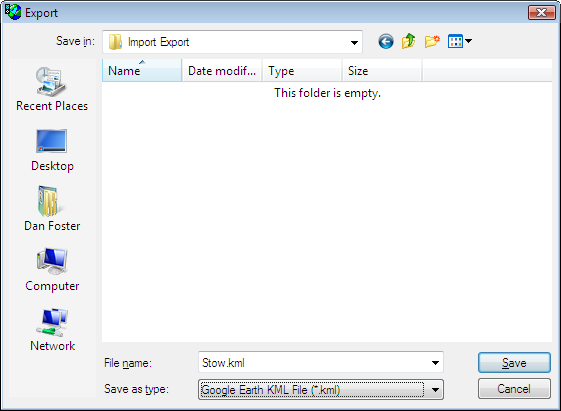

- #EXPORT KML FOR GOOGLE EARTH PRO SATELLITE HOW TO#
- #EXPORT KML FOR GOOGLE EARTH PRO SATELLITE INSTALL#
- #EXPORT KML FOR GOOGLE EARTH PRO SATELLITE ZIP FILE#
- #EXPORT KML FOR GOOGLE EARTH PRO SATELLITE FULL#
Once you’re able to see your entire area of interest, while the popup box is still open, click on an outside point of your area of interest.

Using your mouse or the search bar at the top left of the screen, locate your general area of interest on the Earth.Follow the directions for installation and open the program.
#EXPORT KML FOR GOOGLE EARTH PRO SATELLITE INSTALL#
#EXPORT KML FOR GOOGLE EARTH PRO SATELLITE HOW TO#
This walkthrough will show you how to build a polygon. A KML file will specify a set of geographic features which may include all or any of the following: place marks, images, polygons, 3D models and text descriptions. It’s a form of XML notation for expressing geographic information in internet-based maps, like Google Earth. What is a KMZ file and why do I need one?Ī KMZ is a zipped file containing one or compressed KML files. Here's a video example of creating a KMZ with images included.First things first. Send an email to your colleagues with your new KMZ file attached. If you copied images from the web to your hard drive, make sure your placemarks reference the images on your hard drive, not the originals on the web.Ĭreate a KMZ file using Google Earth that reads your KML file and automatically collects the images it needs for the KMZ file from your hard drive. Make sure that any images you want to include in your KMZ file are on your computer's hard drive. Google Earth does this automatically for you if the images you use in your placemarks are on your computer's hard drive.īefore you start creating a self-contained project, complete the section on web-dependent projects above. If you're planning to send around your content to a private group or are presenting it in a location that has limited or no internet access, consider bundling any images your placemarks reference as a part of your final KMZ file. HTML editing software: Adobe Dreamweaver, Nvu, Mozilla Composer
#EXPORT KML FOR GOOGLE EARTH PRO SATELLITE ZIP FILE#
ZIP file software: 7-Zip, Stuffit, The Unarchiver

Here are some links and resources mentioned in the video: Using KMZ Files for Web-Dependent Projects” Here's a simple video example of making a KMZ file (without including images) and publishing it on the web: Publish your new KMZ file on your web server.
#EXPORT KML FOR GOOGLE EARTH PRO SATELLITE FULL#
An absolute path is the full url to the image, such as, rather than a relative path, like images/google_sm.gif.Ĭreate a KMZ file that includes only your KML file. In your KML file, refer to each image on your web site using its absolute path. This is usually a question for your webmaster. If you want to view your KML or KMZ in Google Earth (v9) on web, then you will need to make sure the server that hosts your images and other files provides appropriate CORS headers, or Earth on web won't be able to access them. Post any images that your placemarks need in a publicly accessible location on your web server Here are a few tips for using images on the web in your KML file: This could come in handy if you will be updating the images periodically, you want to include attributed images from another site, or if you simply want to reduce the download size of your KMZ file.

Sometimes you'll want your placemarks to reference images on the web.


 0 kommentar(er)
0 kommentar(er)
